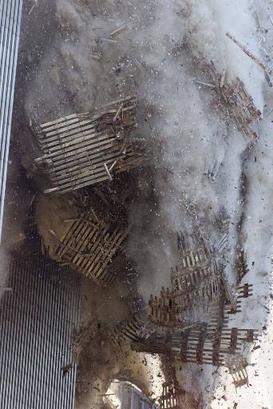I, myself was stuck at work and didn't hear about it until six hours after it had happened. I didn't get what had happened until I was on my way home and stopped by a pizzaplace and saw the videos on the telly. The channel they had on? It was CNN. The people at the pizzaplace only said: "Damn al Quida". The only thing that I was able to think about at that moment was that there were a person in N.Y. that I knew and loved who used to be in the WTC area.
9 years has now passed and my memory is still hounted by that day. You can read about 9/11 in the newspapers and you hear about it in the newscasts but it's not that much about the people who died that day! Did you forget that there were poeple who died that day? Innocent people who just happened to live in the US of A!
At least 2,985 people died in the September 11, 2001, attacks, including:
- 19 terrorists
- 2,966 victims [2,998 as of Spring 2009]
There were 266 people on the four planes:
- American Airlines Flight 11 (crashed into the WTC): 92 (including five terrorists)
- United Airlines Flight 175 (crashed into the WTC): 65 (including five terrorists)
- American Airlines Flight 77 (crashed into the Pentagon): 64 (including five terrorists)
- United Flight 93 (downed in Shanksville, PA): 45 (including four terrorists)
There were 2,595 people in the World Trade Center and near it, including:
- 343 NYFD firefighters and paramedics
- 23 NYPD police officers
- 37 Port Authority police officers
- 1,402 people in Tower 1
- 614 people in Tower 2
- 658 people at one company, Cantor Fitzgerald
- 1,762 New York residents
- 674 New Jersey residents
- 1 NYFD firefighter killed by a man jumping off the top floors of the Twin Towers
There were 125 civilians and military personnel at the Pentagon.
1,609 people lost a spouse or partner on 9/11. More than 3,051 children lost parents.
While it was mostly Americans who were killed in this horrific attack, there were also 327 foreign nationals. Here is the breakdown, according to country:
Argentina: 4
Australia: 11
Bangladesh: 6
Belarus: 1
Belgium: 1
Bermuda: 1
Brazil: 3
Canada: 27
Chile: 2
China: 4
Cote d'Ivoire: 1
Colombia: 17
Democratic Republic of the Congo: 2
Dominican Republic: 1
El Salvador: 1
Ecuador: 3
France: 1
Germany: 11
Ghana: 2
Guyana: 3
Haiti: 2
Honduras: 1
India: 1
Indonesia: 1
Ireland: 6
Israel: 5
Italy: 4
Jamaica: 16
Japan: 26
Jordan: 2
Lebanon: 3
Lithuania: 1
Malaysia: 7
Mexico: 16
Moldova: 1
Netherlands: 1
New Zealand: 2
Nigeria: 1
Panama: 2
Peru: 5
Philippines: 16
Portugal: 3
Poland: 1
Russia: 1
South Africa: 2
South Korea: 28
Spain: 1
Sweden: 1
Taiwan: 1
Ukraine: 1
Uzbekistan: 1
United Kingdom: 67
Venezuela: 1
Shouldn't we remember the people who died today 9 years ago instead of fighting about religion and bookburnings and stuff like that?



















